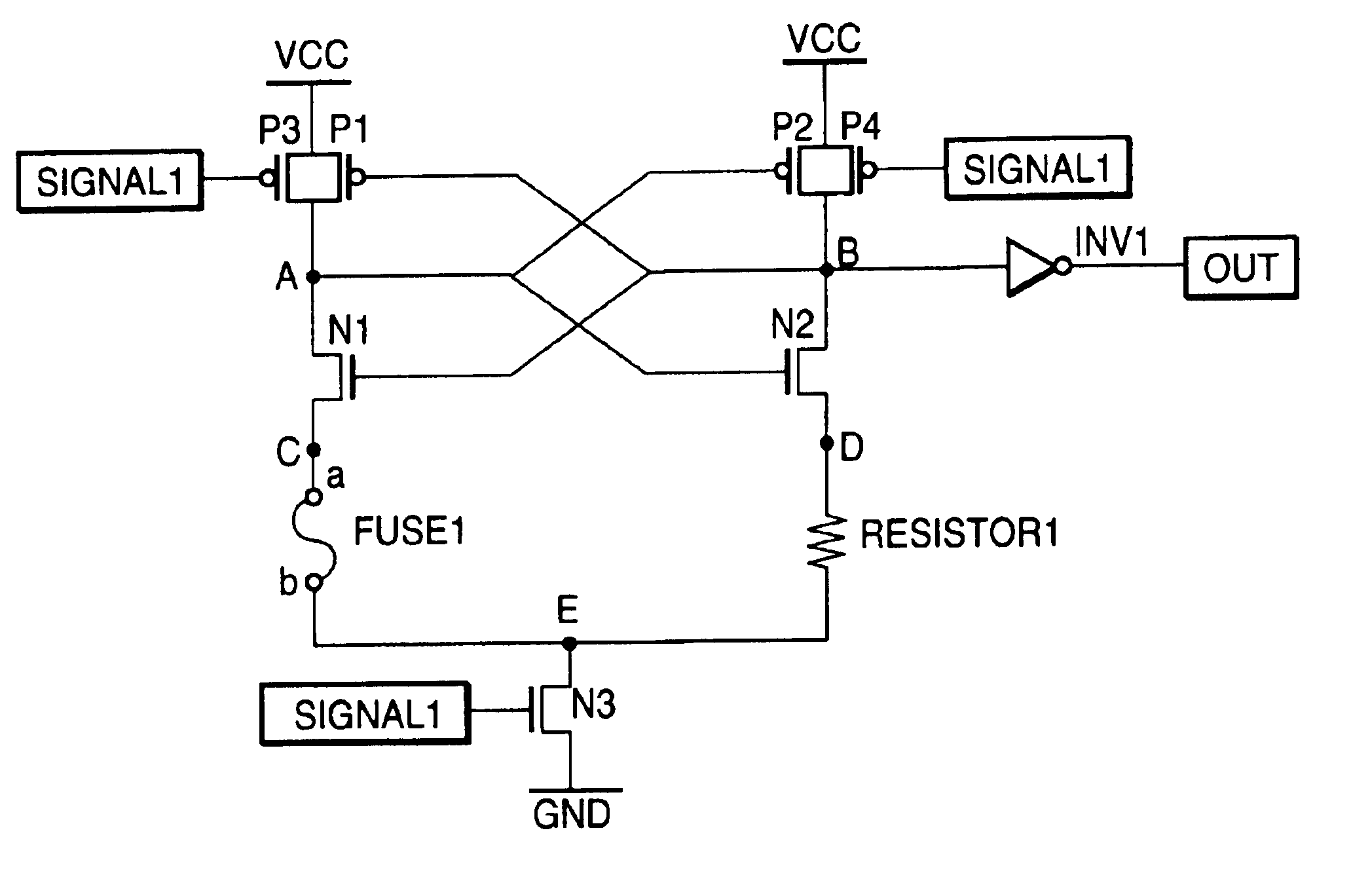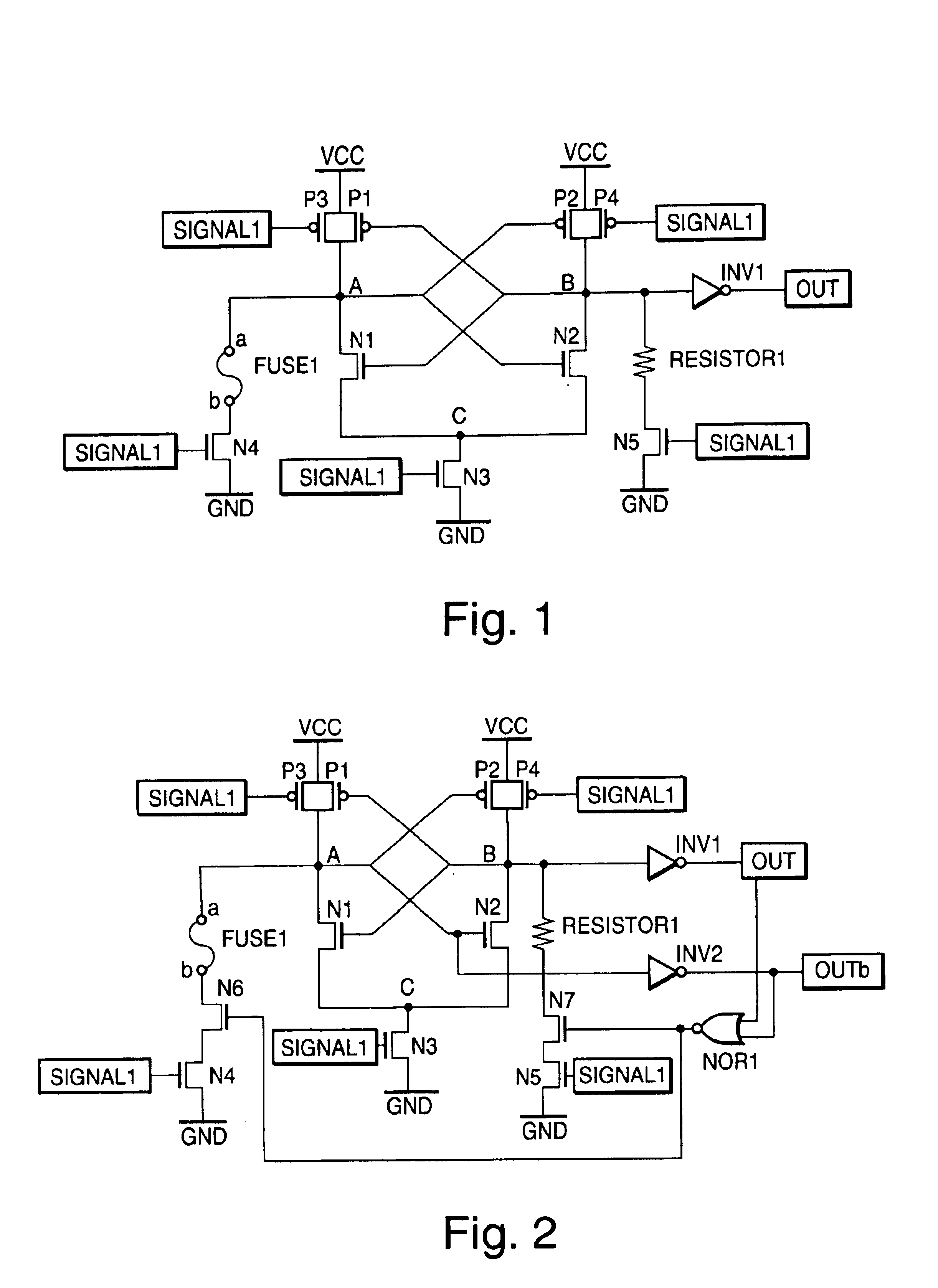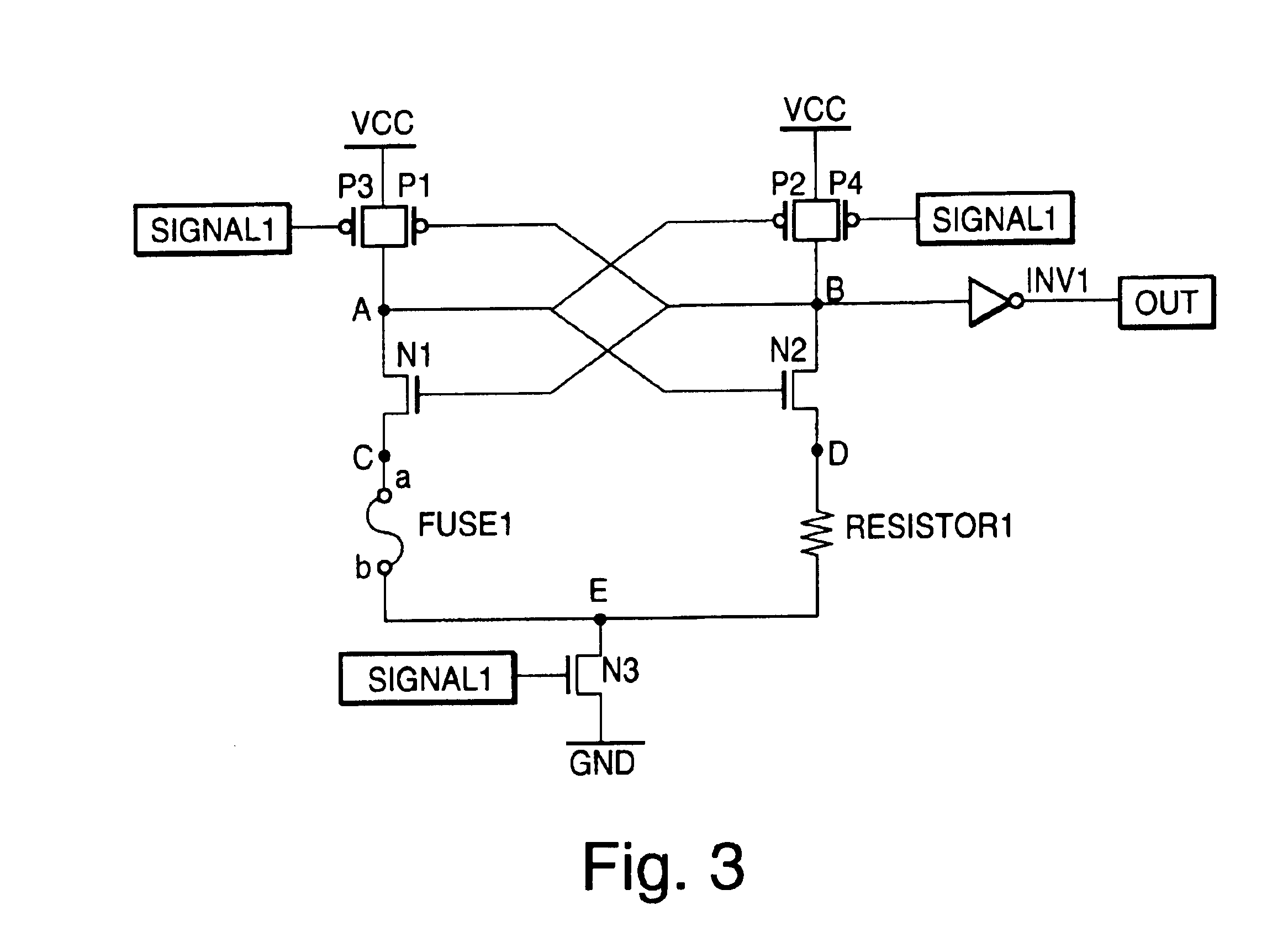Fuse detection circuit
a detection circuit and fuse technology, applied in logic circuit coupling/interface arrangement, pulse technique, instruments, etc., can solve the problem of not being able to draw up to 100% of the laser device capacity, and achieve the effect of reducing the layout area
- Summary
- Abstract
- Description
- Claims
- Application Information
AI Technical Summary
Benefits of technology
Problems solved by technology
Method used
Image
Examples
first embodiment
[0017]FIG. 1 is a circuit diagram of a fuse detection circuit showing a first embodiment of the present invention. The fuse detection circuit comprises a fuse element (fuse 1), a resistive element (resistor 1) used as the reference, PMOS transistors (P1 through P4), NMOS transistors (N1 through N5), and a CMOS inverter (INV1).
[0018]One terminal b of the fuse 1 is connected to the drain of the transistor N4, and the other terminal a of the fuse 1 is connected to the drain of the transistor N1, the drain of the transistor P1, and the drain of the transistor P3, i.e., a node A.
[0019]The source of the transistor N4 is connected to a reference potential (e.g., ground potential) GND, the source of the transistor N1 is connected to the drain (node C) of the transistor N3, the sources of the transistors P1 and P3 are respectively connected to a power supply voltage VCC, and the source of the transistor N3 is connected to the reference potential GND.
[0020]One terminal of the resistor 1 is co...
second embodiment
[0029]FIG. 2 is a circuit diagram showing a second embodiment of the present invention. The present embodiment comprises a fuse element (fuse 1), a resistive element (resistor 1) used as the reference, PMOS transistors (P1 through P4), NMOS transistors (N1 through N7), CMOS inverters (INV1 and INV2), and a CMOS NOR gate (NOR1).
[0030]One terminal b of the fuse 1 is connected to the drain of the transistor N6, and the other terminal a of the fuse 1 is connected to the drain of the transistor N1, the drain of the transistor P1, and the drain of the transistor P3, i.e., a node A.
[0031]The source of the transistor N6 is connected to the drain of the transistor N4, the source of which is connected to a reference potential GND. The source of the transistor N1 is connected to the drain (node C) of the transistor N3, the sources of the transistors P1 and P3 are respectively connected to a power supply voltage VCC, and the source of the transistor N3 is connected to the reference potential GN...
third embodiment
[0043]FIG. 3 is a circuit diagram showing a third embodiment of the present invention, which comprises a fuse element (fuse 1), a resistive element (resistor 1) used as the reference, PMOS transistors (P1 through P4), NMOS transistors (N1 through N3), and a CMOS inverter (INV1).
[0044]One terminal a of the fuse 1 is connected to the source (node C) of the transistor N1, and the other terminal b of the fuse 1 is connected to the drain (node E) of the transistor N3. The drain of the transistor N1 is connected to the drains of the transistors P1 and P3, i.e., a node A, the source of the transistor N3 is connected to a reference potential GND, and the sources of the transistors P1 and P3 are connected to a power supply voltage VCC.
[0045]One terminal of the resistor 1 is connected to the source (node D) of the transistor N2, and the other terminal of the resistor 1 is connected to the node E. The drain of the transistor N2 is connected to the drains of the transistors P2 and P4, i.e., a n...
PUM
 Login to View More
Login to View More Abstract
Description
Claims
Application Information
 Login to View More
Login to View More - R&D
- Intellectual Property
- Life Sciences
- Materials
- Tech Scout
- Unparalleled Data Quality
- Higher Quality Content
- 60% Fewer Hallucinations
Browse by: Latest US Patents, China's latest patents, Technical Efficacy Thesaurus, Application Domain, Technology Topic, Popular Technical Reports.
© 2025 PatSnap. All rights reserved.Legal|Privacy policy|Modern Slavery Act Transparency Statement|Sitemap|About US| Contact US: help@patsnap.com



